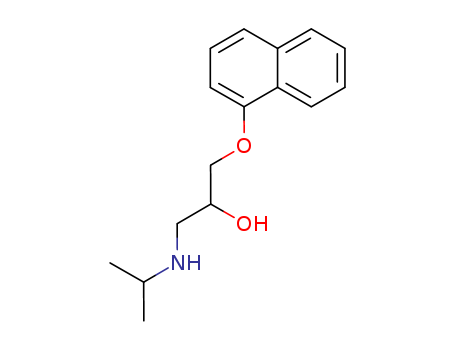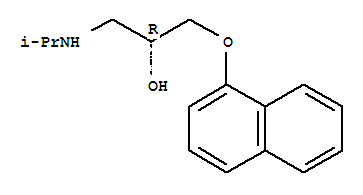- Chemical Name:Dexpropranolol
- CAS No.:5051-22-9
- Molecular Formula:C16H21NO2
- Molecular Weight:259.348
- Hs Code.:2933990090
- European Community (EC) Number:225-749-2
- UNII:PG6KY07UD7
- DSSTox Substance ID:DTXSID3045304
- Nikkaji Number:J8.801C
- Wikidata:Q27088458
- NCI Thesaurus Code:C77944
- Pharos Ligand ID:ABUWF4KLMWKM
- Metabolomics Workbench ID:53405
- ChEMBL ID:CHEMBL275742
- Mol file:5051-22-9.mol
Synonyms:Anaprilin;Anapriline;Avlocardyl;AY 20694;AY-20694;AY20694;Betadren;Dexpropranolol;Dociton;Hydrochloride, Propranolol;Inderal;Obsidan;Obzidan;Propanolol;Propranolol;Propranolol Hydrochloride;Rexigen






